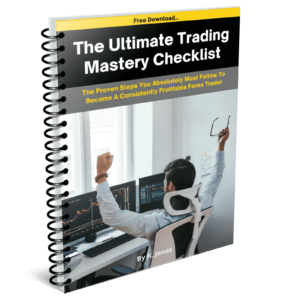What is Forex Trading:
A Begginners Guide
Understanding Forex Trading: What is it and How Does it Work?
Forex trading, which is also referred to as foreign exchange trading or currency trading, involves the buying and selling of currencies on the foreign exchange market in order to generate profits.
Read on and I will explain the basics of forex trading and how it works.

Making a Profit through Forex Trading: A Beginner's Guide
Forex trading involves buying a currency pair at a low price and selling it at a higher price to make a profit. Traders can make money on forex trading in two ways: by buying a currency pair at a low price and selling it at a higher price, or by selling a currency pair at a high price and buying it back at a lower price.
Opening a Trading Account with a Forex Broker
To trade forex, you need to open a trading account with a forex broker. The broker will provide you with a trading platform, which is a software program that allows you to buy and sell currencies.
How to Buy and Sell Currencies on the Forex Market
You can trade currencies 24 hours a day, five days a week, as the forex market is open around the clock. When you open a position on a currency pair, you can either go long or short. Going long means buying a currency pair with the expectation that its value will rise, while going short means selling a currency pair with the expectation that its value will fall.

Managing Risk in Forex Trading: Tips and Strategies
Forex trading involves a lot of risk. The market is highly volatile and prices can fluctuate rapidly, which means that traders can experience significant gains or losses in a short period of time. It’s essential for traders to manage their risk carefully to avoid substantial losses.
Stop Loss Order
One of the most important tools that traders can use to manage their risk is a stop-loss order. A stop-loss order is an order to close a position automatically if the price of a currency pair reaches a certain level. By setting a stop-loss order, traders can limit their potential losses and prevent their trades from turning into bigger losses.
Position Sizing
Another important aspect of risk management in forex trading is position sizing. Position sizing refers to the amount of money that a trader allocates to each trade. Traders should never risk more than they can afford to lose on a single trade. As a general rule of thumb, traders should risk no more than 1-2% of their account balance on any one trade.
Risk/Reward
Traders can also use risk-reward ratios to manage their risk. The risk-reward ratio is the ratio of the potential profit of a trade to its potential loss. Traders should aim for a risk-reward ratio of at least 1:2 or 1:3. This means that the potential profit of a trade should be at least twice or three times the potential loss.
Technical Analysis and Fundamental Analysis: Tools for Successful Forex Trading
Forex trading involves a lot of analysis and strategy. Traders use various tools and techniques to analyze the market and make informed trading decisions. Technical analysis involves studying charts and indicators to identify trends and patterns, while fundamental analysis involves analyzing economic and political events that can affect currency prices.
Is Forex Trading Right for You? Factors to Consider Before Starting
Forex trading also involves a lot of dedication and effort. It’s important to consider your goals, risk tolerance, and investment strategies before starting to trade.

The Benefits and Risks of Forex Trading from Home
Forex trading can be a lucrative way to make money from home, but it also involves significant risks. It’s important to understand the benefits and risks of forex trading before making any investments.
Common Forex Trading Terms Every Beginner Should Know
As a beginner in forex trading, it’s important to familiarize yourself with some common terms used in the industry. Here are a few terms that you should know:
Pip: Pip stands for “percentage in point” and represents the smallest possible price change that can occur in a currency pair.
Spread: The spread is the difference between the bid price and the ask price of a currency pair. The bid price is the price at which a trader can sell a currency pair, while the ask price is the price at which a trader can buy a currency pair.
Leverage: Leverage is the amount of money that a trader can borrow from their broker to open a position. It allows traders to control larger positions with smaller amounts of capital. However, leverage can also increase the risk of losses.
Margin: Margin is the amount of money that a trader needs to deposit with their broker to open a position. It’s usually expressed as a percentage of the total position size.
Stop-loss order: A stop-loss order is an order to close a position automatically if the price of a currency pair reaches a certain level. It’s used to limit potential losses.
By understanding these common terms, you’ll be better equipped to navigate the world of forex trading and make informed decisions.
Conclusion: Developing a Trading Plan for Success in Forex Trading
Forex trading can be a profitable venture if you develop a trading plan that suits your goals and risk tolerance. Always remember to manage your risk carefully and never invest more than you can afford to lose.
Get Your FREE Copy Today
The Proven Steps You Absolutely Must Follow To Become A Consistently Profitable Trader

Get Your FREE Copy Today
The Proven Steps You Absolutely Must Follow To Become A Consistently Profitable Trader

